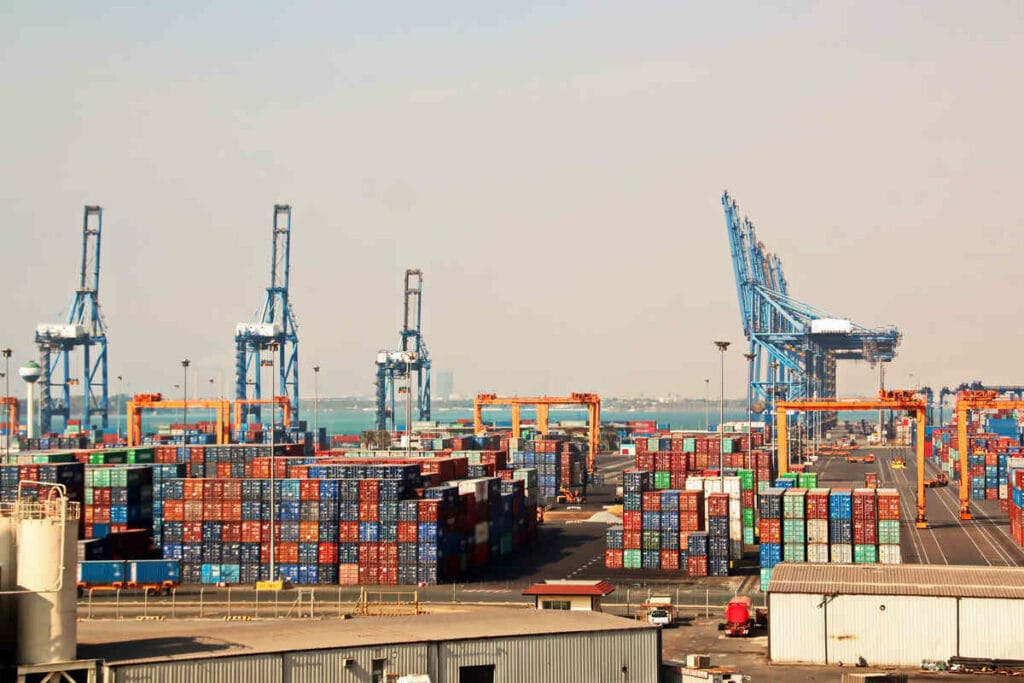Goldman Sachs analysts estimated that Saudi Arabia may spend about $1 trillion as part of the total new shekel investments estimated at $3.3 trillion. Saudi plans to invest that sum by the end of the decade in six specific sectors. These include clean technology, metals and mining, and transportation and logistics services.
According to the bank’s study, Saudi Arabia’s efforts to diversify its economy away from oil have begun to bear fruit.
To transform its economy the Saudi government launched the National Investment Strategy in 2021. It provides additional support for innovation, incentives to enhance private sector contributions, and targeted support for strategic sectors.
Projects worth $870 billion
Saudi Arabia plans to establish mega projects worth $870 billion by 2030. Already in progress is the NEOM project, a futuristic city on the Saudi side of the Gulf of Aqaba.
Goldman Sachs research analyst Faisal Al-Azmeh expects more strategies and announcements as initially set goals are achieved. He expects targets to be supported by more technological breakthroughs across sectors.
The six areas that will benefit from increased investment, according to Goldman Sachs, are:
Metals and mining
The Saudi government issued a new mining investment law in 2021. This law aims to facilitate issuing licenses to explore and benefit from unexplored metals estimated at about $1.3 trillion. Moreover, total investments are estimated at $170 billion. Saudi Arabia is working to expand the scope of investments in this sector by opening up to foreign countries, the latest of which is Italy.
Transportation and logistics services
Saudi Arabia recently launched an updated National Transport Strategy, the Saudi Aviation Strategy, and a new national airline. With all these, Saudi seeks to become a leading travel and cargo hub. It also plans to expand King Salman Airport. Total investments have thus far reached approximately $150 billion. The latest of these investments is the launch of 5 road development projects worth $193 million in the Al-Qassim region.

Clean technology
Moreover, Saudi Arabia plans to add approximately 60 gigawatts of renewable energy capacity. It also aims to add 2 to 3 gigawatts of nuclear power capacity by 2030. Additionally, Saudi seeks to increase the production of clean hydrogen and electric vehicles. Total investments in those fields are estimated at $206 billion.
It is worth noting that Saudi has already started forging agreements with Chinese and Japanese companies in the field of electric vehicles.
Digital transformation
Capital expenditures for the country’s telecommunications service providers are at the heart of Saudi economic plans. Investments are focused on network capacity, specifically 5G networks and fiber-to-the-home expansions. Thus, total Saudi investments in this sector total about $147 billion.
Primary energy
Conventional energy production continues to weigh heavily in the country’s economic plan. Accordingly, it plans to expand oil and natural gas capacity as part of the strategy. Saudi Arabia will invest around $245 billion in this field.
Final energy
The plan sees the growing demand for petrochemical products outpacing the growth in demand for gasoline and diesel. This gives a boost to investment in areas such as crude oil and chemical technology. Hence, total investments in this field are around $100 billion. Moreover, non-oil exports in Saudi Arabia jumped to SAR26.7 billion last July. Therefore, these investments are likely to lead to a super capital expenditure cycle until the end of the decade.
Saudi National Investment Strategy
Generally, the National Investment Strategy focuses on enhancing the role of foreign direct investment. Foreign investment is expected to grow to 3.4 percent of the GDP by 2025 and to 5.7 percent by 2030.
Besides, the kingdom also expects an increase in gross fixed capital formation. It currently contributes about 25 percent of the GDP and is expected to reach 26.4 percent by 2025, and to 30 percent by 2030.
The National Investment Strategy aims to enable Vision 2030. Al-Azmeh states: “Since the launch of Vision 2030 in 2016, Saudi Arabia has made great strides in developing the non-oil economy through various developments and investments across strategic economic sectors.”
Read: Expo 2030: The awaited day arrives

Shareek program
Another pillar of the National Investment Strategy is Shareek. It is a program launched in 2021 that aims to increase domestic investment by listed and unlisted private sector companies. Its goal is to increase domestic investment to $1.3 trillion by 2030. As part of the program, which includes 28 private companies, the Kingdom seeks to grow non-oil exports to 50 percent from 16 percent. Thus, the government announced the first wave of supported projects for major companies under Shareek in March this year.
Improving international investment
The Kingdom’s oil-generated wealth puts it in a unique position to pursue these commitments. The bank’s financial analysts in the MENA region indicate that the large oil gains have improved the country’s international investment position. Thus, international investments increased by $150 billion between the first quarter of 2021 and the first quarter of 2023 alone.
Saudi Arabia is home to some of the world’s largest sovereign wealth funds, including the Public Investment Fund (PIF). PIF has seen its assets under management rise to nearly $700 billion from $250 billion in 2018.
Investment plans
“Since the launch of Vision 2030 in 2016, Saudi Arabia has made great strides in developing the non-oil economy” Azmeh says. It has achieved that through various developments and investments across strategic economic sectors.
He added, “Investment plans are likely to develop further alongside technological advancement and availability with time and sector strategies are finalized.”
For more news on the economy, click here.




